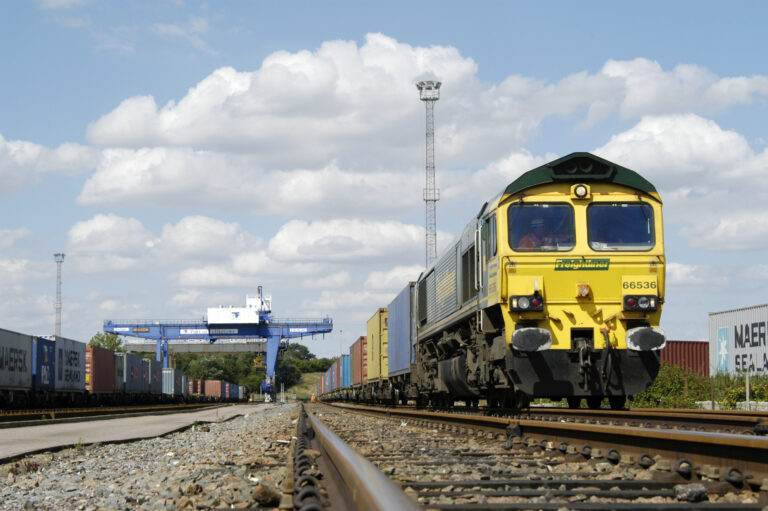Rail freight contributes £1.7 billion of economic benefits to the UK, according to a study by the Rail Delivery Group, whose members include Network Rail and the major rail freight companies.
The study shows that the biggest beneficiaries are the North West (£331 million) Yorkshire and Humberside (£324m) and Scotland (£192m).
The benefit to London is a modest £130m while the North East and East of England do worst – £82m and £74m respectively.
The figures include estimates of direct productivity benefits and estimates of “externality” benefits.
The report highlights the fact that every tonne of freight transported by rail reduces carbon emissions by 76 per cent compared to road haulage. It also points out that since 2003, the number of freight trains on the network has fallen by 46 per cent but the amount of freight moved on each train has risen by 75 per cent.
Rail Freight Group executive director Maggie Simpson, said: ‘This work by the Rail Delivery Group highlights the very significant benefits that rail freight is providing to the UK each year, at over £60 for each and every household.
New figures from the Office of Rail and Road show that in the year to April 2018, construction and international rail freight were the strongest performing sectors, with 1.5 per cent and 13 per cent growth respectively.
However, there was an overall reduction of 1.7 per cent with coal falling another 13 per cent over the year.
Simpson said: “Although the headline results are disappointing we are pleased to see the continued growth in construction traffic, driven an increased use of rail in support of UK infrastructure including house building, new roads and major projects.
“Over the coming year we are also expecting to see renewed growth in intermodal, with new terminals opening such as iPort at Doncaster and services starting from Port of Liverpool and elsewhere.”







